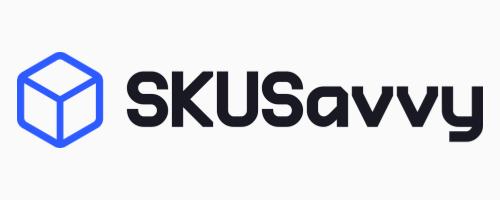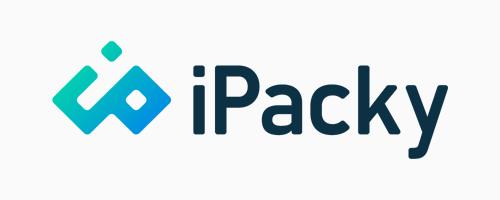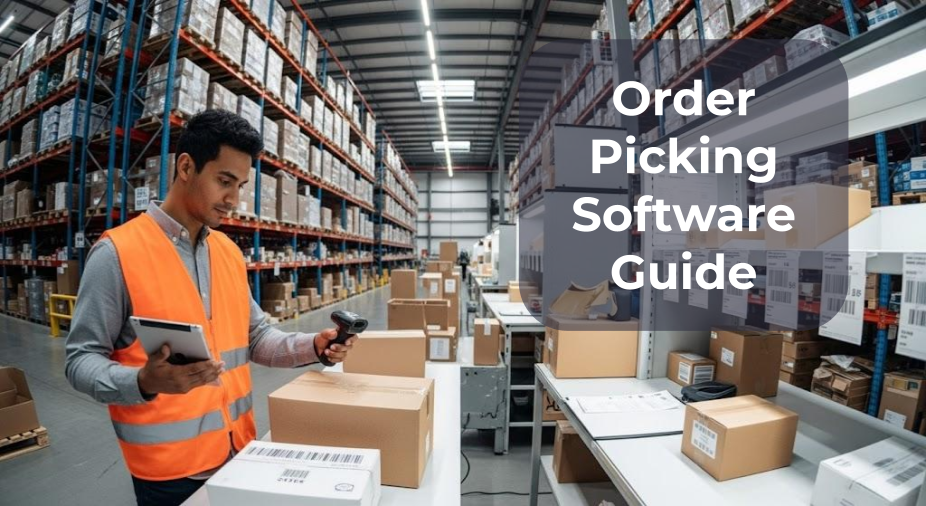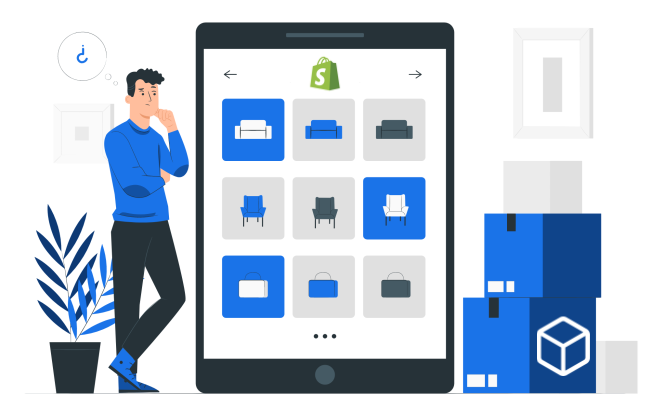Best Pick Pack Ship Software: Features, Pricing, Integrations, Analysis
Alex
3/29/2022
Pick pack ship software makes it easy to pair up inventory with orders and ship it out to complete the order fulfillment process. The software making this possible for modern brands is part of the reason so many have quickly grown from a few orders a day to thousands of orders a week. A pick pack ship software ends up being one part of a complete warehouse or inventory solution, though there are exceptions which we have dug up here.
In this guide to pick pack ship software, there are three primary objectives that we aim to uncover before we dive into the available solutions. First, what business goals do you hope to achieve by using a pick pack ship software? Second, what features does your business need to support the goals? How should you compare costs and benefits for pick pack ship software?
What business goals will pick pack ship software achieve?
Since you've come to this page there's a good chance you might be looking for something to clean up the picking process and speed through shipping. This need can come as a variety of points along the lifecycle of your business. For starting merchants, you may realize your orders are going out with inaccuracies and you need a scan along the fulfillment process. For slightly larger merchants, you may realize the inventory you have on hand is scattered around the warehouse and in the heads of warehouse leaders. For others, you may realize it's too much of a pain for new employees to get up to speed on product locations and availability and you need something to keep track. A pick pack ship software can help to improve each of these areas, though the way you choose to employ a new system comes down to what you need to improve. Take the time to understand why you have come to need a pick pack ship software before throwing money at it. Something to keep in the back of your mind is that a pick pack ship software can quickly turn into a very large-scale WMS or ERP. Keeping this in mind will help you select between more of a Shopify app style system or a full ERP like Netsuite and the costs you encounter will certainly be impacted by this.
Use the 5 Whys
Asking why five times when facing a problem helps get to the root cause. An example for identifying problems within a pick pack ship setting might look like this:
#1: 10% of orders are inaccurate. Why?
#2: picked orders contain similar but wrong items. Why?
#3: some items are hard to identify differences. Why?
#4: because there is no way to identify which item is which. Why?
#5: because we have no way to read the barcodes on an item?
This example is simple for the purpose of identifying how a brand might uncover the need for barcode scanners as part of the pick pack ship software which could fix the problem here. This method might help you uncover what features and benefits you require when looking for a pick pack ship software.
What features are included in pick pack ship software
Based on your goals you can make a selection of features you think need to be included in the pick pack ship software. Keeping this list narrow will be the challenge, since traditionally a pick pack ship system is just one part of a larger warehouse or inventory management system. All things considered, coming up with a list of things you must have, would like to have, and can go without are really important to the success of the selection. It's very likely you will find a bunch of systems that cover 90% of what you need, and the other 10% you'll need to make a decision on. You can either go without the feature, continue to search for the feature, build the feature yourself, or do a combination of buy/build to utilize the pick pack ship software base, while adding functionality in the form of an API connection.
Picking Features
The following features include a variety of options that may be included in the picking portion of the platform. These options might also range wildly depending on the industry you are in, for the purpose of this blog, we are mainly talking about fast-moving consumer goods and foods/beverages:
Selection for pick style: visual (SKUSavvy only), wave, zone, single item, batch, voice
Scan options for items to enforce scanning the item barcode during picking
Scan options for bin locations to enforce a scan of the inventory location barcode
Detailed pick list: digital pick lists (SKSUavvy) vs. printed pick lists (ShipStation)
Item image on picking
Real-time data transfer between inventory and picking
Guided picking based on item location
Batching of orders: there are different levels of intelligence for putting similar orders together so you can efficiently get all the items to fulfill a batch of orders: single-item, multi-item, multi-item by quantity, multi-item by item
Picking by delivery location or shipping service
Pick to zone which enables the picker to assemble a batch of orders then scan or allocate that batch of orders to a warehouse zone
Pick to cart so that when picking a batch of items you can store items to a location on the cart
Barcode scanning vs. RFID
Directed workflows to employees in the warehouse for pick notifications
Hand-off to new employees in the warehouse between pick and pack
Packing Features
In the packaging stage, the primary concern is making sure the right inventory was picked, and the right inventory goes within the correct box for shipping. Here are primary features you can expect to see in the packaging flow:
Accept a picked batch of orders, recognize what orders are contained within the batch if not a single order
Provide order line item information
Provide package size suggestions based on item dimensional information
Scan options on packaging to determine the right item goes with the correct package
Confirm quantities of items going into each order
Print invoice or packing slip (most modern brands do not include a packing slip anymore)
Shipping Features
Shipping software can be it's own separate part of the fulfillment process. Popular shipping software like ShipStation, EasyPost, Shippo, uShip etc. has made it incredibly easy to confirm items and get a shipping label. Below are some features you could expect to see within a shipping software:
Confirmation of package receipt from packing (if this is a separate step)
Connect with carriers directly for rates, and labels
Validate the shipping address
Send package weight to carriers, in some systems (like SKUsavvy) this will generate based on item weight contained in the order, and packaging material weight, in others this is manually weighed and entered, or in-line if using a conveyor
Send package dimensions to carriers
Receive rates based on package weight and dimensions
Rate shopping to select based on cost and shipping time (this can automatically be done in some systems)
Label purchase
Label generation
Label printing
What does pick pack ship software cost?
This question will vary wildly depending on the relative size of the system you select. Hopefully, you have been able to narrow down from your feature selection which system is right for you. The cost structure for this type of system is most likely going to be a mix of subscription, user-based, license, usage-based, or tiered. Most likely you will be looking for a subscription model. Below are a few examples from platforms of pricing you might expect to see:
Basic Pick Pack Ship Software
In this range of product you can expect to find the basics of barcode scanning and product confirmation and not much beyond this. This category will include apps on the Shopify/Big Commerce/WooCommerce stores and one-off software that does a specific task within the warehouse. For many smaller shops, it will probably do exactly what you need to a point.
Price Range
$19 starter with basic scanning
$29 mid-level pick-lists and fulfillment
$49 mixed barcode scanning and digital picking
Enhanced Pick Pack Ship Software
A system that offers barcode scanning as well as inventory or bin locations, and some sort of shipment capability will fall into this category. These systems might have a hard time supporting businesses of any sort of scale, but it will help to organize the pick lists and provide some information on the items you will be packing. At the later stages of this system, you will be better served with a full-scale inventory system or WMS.
Price Range
$29 some Shopify apps will offer more advanced features for a similar price, though they may be buggy
$79 full pick pack ship features with inventory and likely full shipping suite
$499 large scale pick pack ship system with many channels and integrations, and likely includes inventory management
The best pick pack ship software is...
What kind of blog would write so much without answering the question? Well, it's important that there's at least some groundwork laid so that you are able to make the best choice for your business. That said, the following apps offer some range of pick pack ship capability, and others offer this as features within a larger inventory or wms system.
SKUSavvy

Of course our favorite choice, and likely yours too, is SKUSavvy. The platform we've built is friendly for all size companies, includes barcode scanning, digital pick lists, full pack, and ship workflow. It's an obvious choice for price and value.
$0.19-$0.04 per order - 50 Free
Pick Pack Ship Visually
Barcode Scanning
Multiple order channels
Scale to 100K+ orders
Inventory & Bin Locations
5 Stars
Other Pick Pack Ship Software
iPacky

iPacky is a simple scanning solution for Shopify stores that will provide the basics for picking, finding items, and updating a shipment with tracking information. It is high priced for the features offered, though for a lite solution is suitable.
$19.99 + $0.06-$0.02 per order
Basic Pick Pack Ship
Limited Barcode Scanning
Multiple order channels
No inventory
5 Stars
ShipStation

iPacky is a simple scanning solution for Shopify stores that will provide the basics for picking, finding items, and updating a shipment with tracking information. It is high priced for the features offered, though for a lite solution is suitable.
$9 - $159
Pack Ship
Limited Barcode Scanning
Primarily a Shipping Platform
No inventory
4.5 Stars




